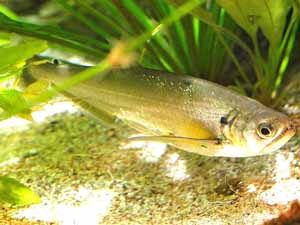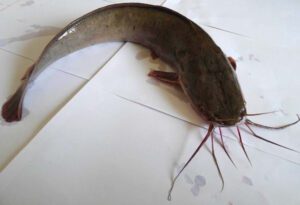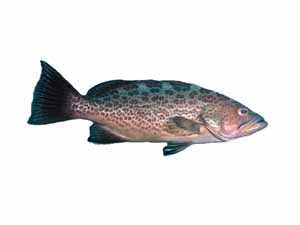Biofloc fish farming has emerged as a groundbreaking technique in sustainable aquaculture. This innovative method promotes the cultivation of fish in a controlled environment with the use of specialized microbial communities known as bioflocs.
By harnessing these naturally occurring microorganisms, biofloc fish farming offers numerous environmental, economic, and social benefits. Now, we are trying to explore the principles, advantages, and future potential of biofloc fish farming as a sustainable solution to meet the increasing global demand for seafood.
What is Biofloc Fish Farming
Biofloc fish farming involves creating an environment in which microorganisms, primarily heterotrophic bacteria, thrive within the aquaculture system. These bioflocs, consisting of organic matter, bacteria, algae, and other microorganisms, serve as a biological filter, recycling waste products generated by the fish into a valuable resource.

How to Start Biofloc Fish Farming?
Starting biofloc fish farming venture is relatively easy and simple. Here we are trying to share the step-by-step process to ensure a successful and profitable biofloc fish farming operation.
Step 1: Site Selection and Infrastructure
Choosing the right location and setting up the necessary infrastructure are vital for the success of a biofloc fish farm. Look for a location with suitable land availability, access to a reliable water source, and proximity to markets. Ensure proper permits and legal requirements are met.
Determine the size and shape of the ponds or tanks based on the projected production capacity. Consider factors such as water depth, aeration systems, and adequate space for biofloc development. Ensure proper water quality by testing and monitoring parameters such as dissolved oxygen, pH, and temperature. Install water filtration systems and implement strategies for water exchange, if necessary. Install aeration systems to maintain optimal oxygen levels for both fish and biofloc growth. Mixing devices or paddlewheels can be employed to prevent sedimentation and ensure uniform distribution of bioflocs.
Step 2: Stocking and Fish Management
Selecting the appropriate fish species for biofloc fish farming is essential. Choose species that are compatible with biofloc systems and have a high market demand. Biofloc systems allow for higher stocking densities compared to traditional aquaculture. Determine the optimal stocking density based on the specific requirements of the chosen fish species. Source healthy and disease-free fingerlings or juveniles from reliable hatcheries. Conduct proper quarantine and acclimation procedures before introducing them to the biofloc system.
Develop a balanced and nutritionally complete feed formula suitable for the chosen fish species. Supplement the feed with occasional application of carbon sources, such as molasses or wheat bran, to stimulate biofloc growth and provide additional nutrition. Implement preventive measures, such as regular monitoring of water quality, maintaining proper stocking densities, and ensuring proper nutrition. Quarantine new fish introductions and be prepared to address potential diseases promptly.
Step 3: Biofloc System Management
Efficient management of the biofloc system is critical for its success. Maintain the appropriate carbon-to-nitrogen (C:N) ratio in the system to stimulate biofloc growth. Carbon sources like molasses or wheat bran should be added judiciously to balance the nutrient composition. Regularly monitor water quality parameters such as dissolved oxygen, pH, ammonia, and nitrite levels. Adjust water exchange rates or aeration levels as needed to maintain optimal conditions for fish and biofloc growth.
Implement regular biofloc management practices, including occasional removal of excess biomass to prevent oxygen depletion and the accumulation of undesirable compounds. Use appropriate biofloc harvesting techniques, such as settling tanks or screens, to collect the bioflocs for fish consumption or further processing.
Maintain a clean and hygienic environment to minimize the risk of diseases. Regularly inspect the fish for signs of illness, and promptly address any issues through proper treatment or consultation with aquatic health professionals. Maintain detailed records of stocking densities, feed inputs, water quality parameters, and any observations related to fish health and growth. This information will help track progress, identify trends, and make informed decisions for future operations.
Step 4: Marketing
Developing a marketing strategy is crucial for the success of your biofloc fish farming venture. Conduct market research to understand the demand for specific fish species and identify potential buyers. Identify the target market segment for your fish products, such as restaurants, local markets, or direct consumers. Understand their preferences, pricing expectations, and distribution channels.
Develop a brand identity and packaging that aligns with your target market’s expectations. Highlight the sustainability and quality aspects of your biofloc fish farming practices to differentiate yourself from competitors. Build relationships with restaurants, retailers, and distributors who value sustainable and responsibly sourced seafood. Participate in local events, farmers’ markets, or food festivals to showcase your products and connect with potential customers.
Establish an online presence through a website or social media platforms. Utilize these channels to educate consumers about the benefits of biofloc fish farming and share updates about your farm and products.






I want to install bio flock fish tank